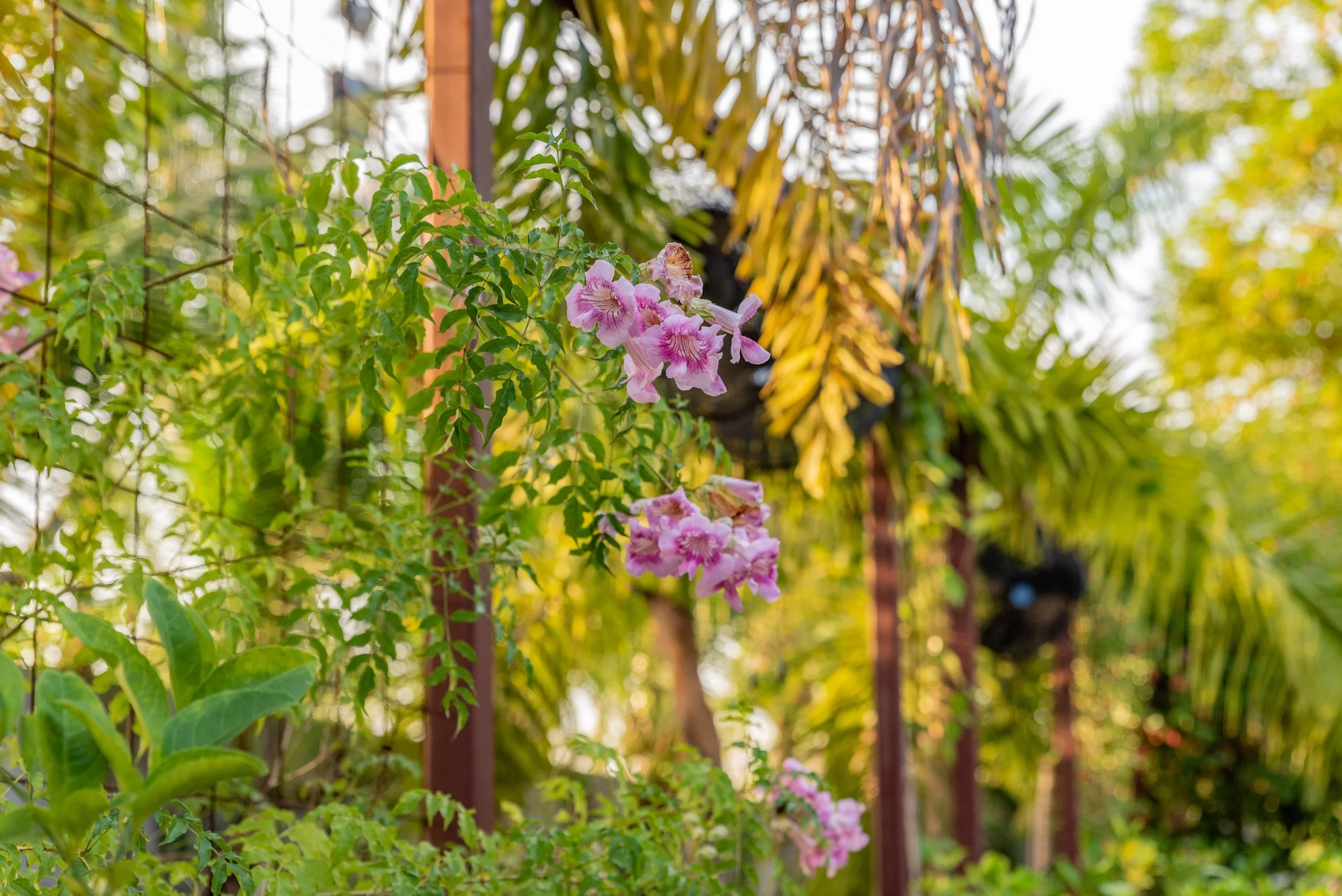In today’s rapidly urbanizing world, the quiet disappearance of bees, butterflies, and native plants may go unnoticed—but the consequences are monumental. At Miami Ironside, we believe that landscape design can do more than beautify a space; it can protect the living systems that make our cities, and our lives, thrive.
That belief has taken root—literally—through the creation of our Pollinator Corridor, a living landscape that nurtures biodiversity in the heart of the city.
Why Biodiversity Matters
Biodiversity is the variety of life that exists on Earth—from microscopic organisms in the soil to birds in the sky. It’s what keeps ecosystems stable, air breathable, and food systems productive. Yet, urbanization, pesticide use, and habitat loss are pushing many species—especially pollinators—toward collapse.
Without bees, butterflies, and birds, one in every three bites of food we eat would vanish. Pollinators are essential to life as we know it.
Cities Can Be Habitats Too
Contrary to popular belief, nature doesn’t stop at the edge of the city. Urban green spaces—when designed with intention—can become micro-habitats that support wildlife, clean the air, and build climate resilience.
That’s where Miami Ironside’s Pollinator Corridor comes in. Our goal is to demonstrate that a thoughtful, artful landscape can be both beautiful and ecologically vital.
Inside the Ironside Pollinator Corridor
We’ve designed our corridor to serve not just human visitors, but the tiny life forms that power our ecosystem:
🌼 Native flowering plants that feed local pollinators
🌳 Trees that clean the air and cool the microclimate
🍃 Soil-supportive ground cover that retains water and prevents erosion
Each plant was selected to play a role in sustaining the urban ecosystem—and to invite Miami’s original inhabitants (bees, butterflies, birds) to return.
Lemon Groove at Miami Ironside
Why It Matters in Miami
Miami is home to one of the most biodiverse ecosystems in the U.S., but it’s also highly vulnerable. Development pressure, saltwater intrusion, and climate change threaten local flora and fauna.
By building an oasis within the urban grid, we’re helping to preserve Miami’s ecological identity, while offering a blueprint for how other districts can integrate biodiversity into their design.
A Place to Learn, Connect, and Protect
Our landscape is more than decoration—it’s an educational tool and a healing space. We invite schools, designers, urban planners, and community members to visit, walk the corridor, and see what’s possible when nature is respected as a partner in design.
Because every square foot of land can either harm or heal. At The Longevity District, we choose to heal.
What You Can Do
Want to protect biodiversity where you live or work? Here are five simple actions:
Plant native species on balconies, rooftops, or yards
Avoid pesticides and herbicides—they harm pollinators
Collect rainwater to support local irrigation
Leave some wildness—not everything has to be trimmed
Support local conservation and restoration projects
You don’t need a forest to support life. You just need to plant with intention.
Visit the Corridor
We invite you to visit the Pollinator Corridor at Miami Ironside.
Come walk the gardens. Listen to the buzz of life.
And remember: in a world of concrete, green space is radical.


